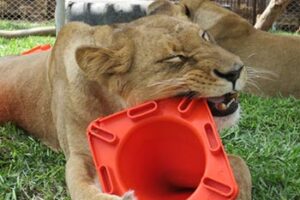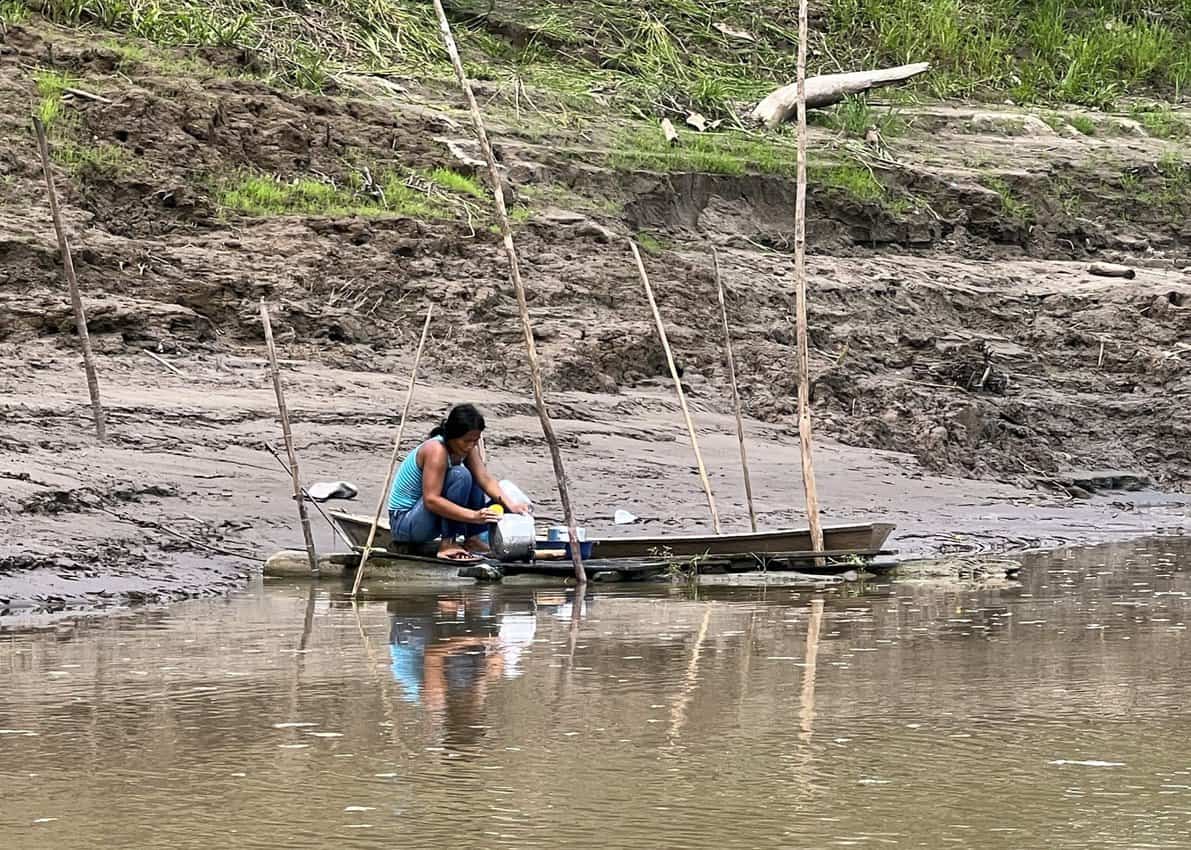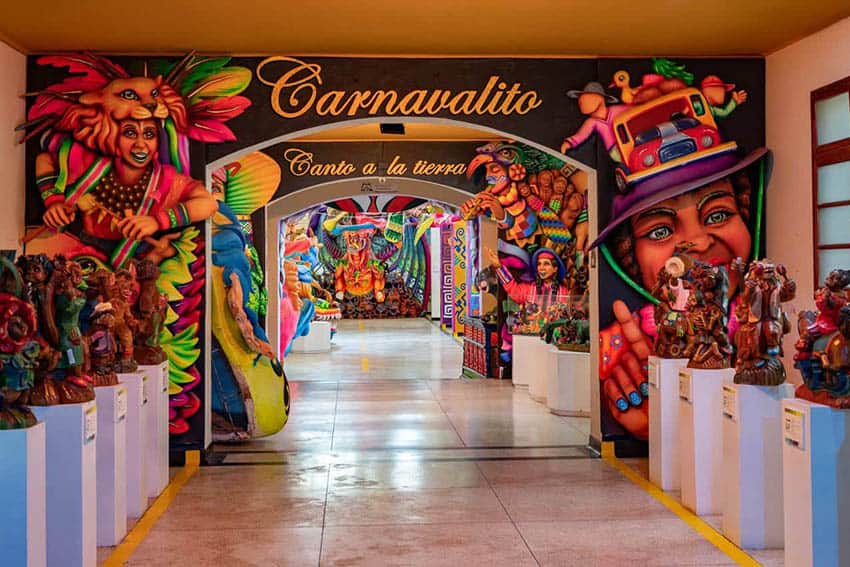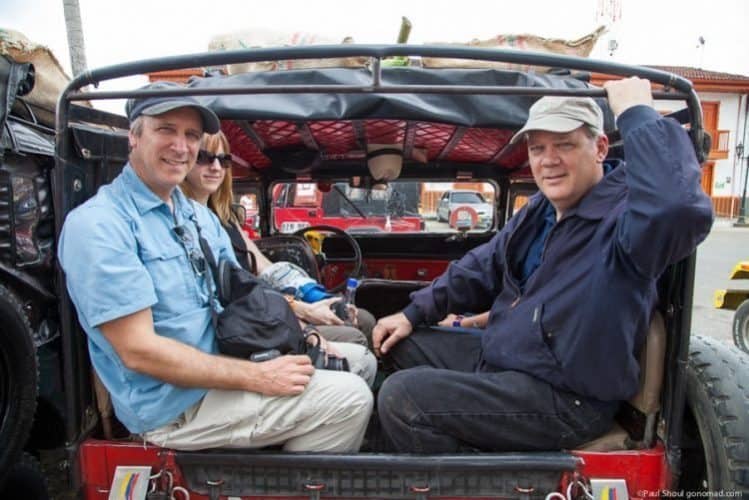

Corcora Valley, Periera, and Antiqua Colombia’s Coffee Center
By Max Hartshorne
We flew to Periera, in Colombia’s interior. That’s when it came.
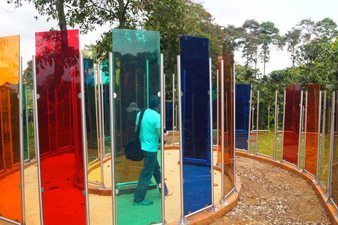
The first moment of bliss was an afternoon in the Cocora Valley, where we had gone to visit a coffee plantation with a distinctly different way of capturing profits in a tough coffee market.
At the Hacienda Combia, Proprietor Manuel Sobogal combines hospitality, acres of coffee trees, and an eco-tourism experience to maximize the return.
He has turned his coffee plantation into a place where visitors can learn everything about the world’s most popular drink, and how it gets from seed to cup.
His hacienda serves mostly guests from Europe and America, almost none from Colombia he told us on a sunny morning we visited. The coffee plantation’s trees are all around, just beyond an infinity pool, and offers simple comfortable rooms with plenty of top-notch Colombian coffee at breakfast.
This would seem to be a given–but I was told that as much as 80% of the country’s best beans are sent to foreign markets and never served in Colombia. So it was unusual to be having a top-notch cup.
Secrets of the Bean
In April 2013, Manuel unveiled a new way to share the secrets of the bean, on a tour that takes visitors through the coffee trees to stations. These stations include a series of colored plastic sheets enabling you to look at the beans through various shades of light.
Another stop looks like a giant birdcage, a teardrop-shaped structure hanging from a post that you can get into to experience the life of one of the region’s many birds–who also do their part in helping to spread the seeds and fertilize them.
On and on, these stops on Hacienda Combia’s coffee trail illuminated all of the aspects of growing coffee, enhancing the visitor’s experience. At the end, there is a set up with paint and brushes where we decorated our own coffee cups and put them into baskets we had woven from bamboo, which is everywhere in this part of the world.

But back to the moment–that same just outside of the town of Salento where the town square is the gathering point for a fleet of old Willys Jeeps. These US Army vintage vehicles are the perfect way to get to the home of the wax palm, the country’s national tree, that lie in a hilly green valley.
Endangered Palm Trees
These trees are endangered because so many of their sweeping palm leaves are stripped by the faithful on Palm Sunday, among other reasons, we were told.
We jumped on the back bumpers of the Jeeps, standing up is the way to see the pretty scenery best, and we were driven through the sumptuous green valley which is all a national park.
With the wind blew through our hair, (we took our hats off to avoid losing them), this ride through Valle de Corcora was a magical and distinct moment when I had to say, wow, what a great place. I’m damn glad to be right here, right now–and would want to be nowhere else!” These moments are why I travel.

Donde Juan B for Trout
In this valley, trout are what’s on the menu, and at the end of our Jeep excursion Donde Juan B, a restaurant with open-air patio seating was our next stop.
Trout served with garlic butter, grilled or fried, was brought out with fresh organic salads from their own garden, and fried green plantains. Later in the day, after another Jeep ride, we visited a cafe called Jesus Martin in Salento to witness latte artists hard at work.
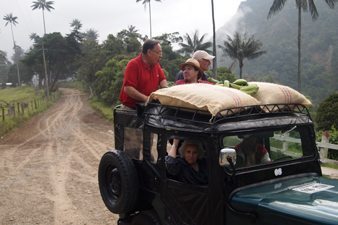
After some explanation about how the best possible beans are selected, we watched a man draw a bull on a freshly whipped latte. Then a tiny dog face…and of course, the expected hearts intertwining hearts. It was art, but better drink it before it gets cold!
Coffee, it seems, flows all out in this part of Colombia. In fact, in all of Colombia, it’s kind of rare to get a good cup of coffee, a high-end roast. It’s just not that common, so most hotels don’t offer very good coffee.
But Manuel is fighting back with a very clever scheme that’s similar to what has been done on American farms. He’s got a lovely Hacienda where guests can relax with views of the coffee fields and take excursions, and he’s making a six-step coffee experience. Guests will walk a narrow path through the coffee trees and learn about every aspect.
First, they can learn about weaving a coffee basket from the ample supplies of bamboo, then relax on a terrace with a coffee.
Then they follow the trail to a station that has water jets showing the importance of water, a circular set up with different colored plastic slabs to look at the coffee beans through different filters, to a giant bamboo birdhouse, and finally to a place where they can paint their own coffee mug.
It’s all about getting much more from the beans than that meager wholesale price. I think they’ll attract a lot of tourists.
Manuel explained that almost no Colombians are among his guests here–they’re all from Europe, England, Australia or the US. Tyler, a US ex-pat, has made his home here in the Coffee Triangle for three years, and I asked him what he missed most about life here versus the US. He said it’s those things that at first you might think you wouldn’t miss–it’s our sense of order, and respect for the law.
Missing the Order
”At first you think it’s great that you can drink a beer on the street, or make as much noise as you want, or do anything and then you sort of miss that order and sense of responsibility of the US,” he said.
The Jeep ride took us through the Valley and ended at a big open-air restaurant where we were greeted by a man with a donkey who looked a lot like Juan Valdez. With grilled trout for lunch and then a ceremonial planting of endangered wax palm trees, it capped off the exciting Jeep ride perfectly.
Colombia is a beautiful country and it was nice to see how well kept up this Valley was, no litter, just a pristine unending series of pretty green hills.
- Exploring California’s Empty Central Coast - April 24, 2024
- Skiing in Georgia - February 21, 2024
- Exciting Rail Travel News in 2024 - February 4, 2024


